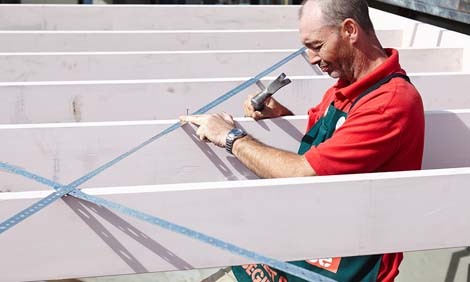fastline12
Aerospace
We are working on a wood post frame construction building with corrugated metal sheeting. Though the corrugated sheeting functions to provide shear resistance, we want to supplement this with strap steel diagonal members in key areas. We want to install this low profile product directly to the wood columns, on the outside, and under the metal sheeting, with of course a protective membrane between the sheeting and straps.
The issue is how best to attach these straps directly to the columns? This will become the weak link in the system and we need the lowest profile possible. We had considered a nailing schedule right through the straps with a requirement of predrilling the straps but this still seems a marginal method at best. Also, due to this method pretensioning would be rather difficult and though this system is considered a secondary load path, we want to ensure it provides reasonable strength.
Any ideas on how to attach these?
The issue is how best to attach these straps directly to the columns? This will become the weak link in the system and we need the lowest profile possible. We had considered a nailing schedule right through the straps with a requirement of predrilling the straps but this still seems a marginal method at best. Also, due to this method pretensioning would be rather difficult and though this system is considered a secondary load path, we want to ensure it provides reasonable strength.
Any ideas on how to attach these?

